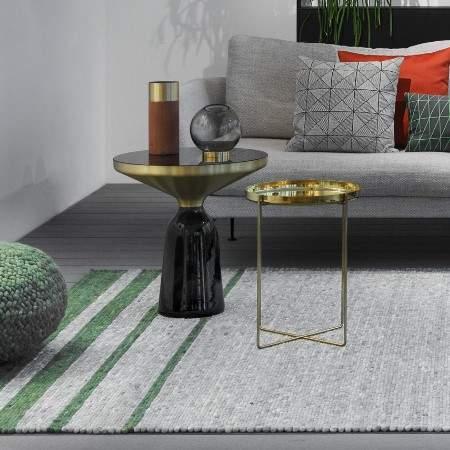Local Storage seems to be disabled in your browser.
For the best experience on our site, be sure to turn on Local Storage in your browser.
3 THINGS TO THINK ABOUT WHEN CHOOSING A RUG: COLOR, TEXTURE, AND SIZE
COLOR
The first point of reference should be color, and we will include pattern in this category. Use the tones and aesthetic of the other design elements (furniture, lighting, paint, etc.) as a guide. In a space that features a lot of light pastels, choose a rug that has a similar color and tone. The rug should be placed first, then the rest of the decor can be added using the rug as a guide. If you're looking for something with a bold pattern and multiple colors, this would be the best piece to start with.
When furnishings and wall coverings have been installed, it's easier to choose a neutral tone, a natural fiber rug like jute, or something with a simple pattern that complements the wall color.
TEXTURE
When choosing an area rug, this aspect is often overlooked. Most people do not look beyond color and pattern when shopping online, but they should. The design of a space will be enhanced by the use of well-curated textures. Contrast your existing textiles with the pieces you choose. Choose a rug made from a material like sisal if your couch has soft, heavily textured upholstery. Choose something full and fluffy if you have a smoother surface in your room, such as a leather sectional or chair. Use the same principle with smaller décor items like pillows and throws to create a rich, layered look.
SIZE
If an attractive piece isn't available in the right size, don't feel compelled to go against the rules. Area rugs that are undersized will create an awkward and small feeling in a room. Covering the seating area is the norm, but making sure the front legs of chairs are on the textile is a satisfactory compromise. Most importantly, you and your guest‘s feet should be touching the rug when seated.
When it comes to a dining room, the chairs should all have room to be pulled out from under the table while still on the rug. If it’s a bedroom rug you’re sizing, it should extend at least a couple feet beyond the bed so that upon waking, your feet find a soft landing. Also to be considered is orientation, rectangular pieces fit rectangular spaces while square rooms look natural with square or round rugs such as the 8-foot diameter Desert Gabbeh by NW Rugs. This may sound obvious but it’s easy to be tempted away from a proper sizing when falling for an attractive textile not available in the right dimensions.
Keep these three categories in mind while shopping and the experience will be simple and stress-free, and the results exceptional. Setting boundaries while designing is a good rule of thumb in general. Limiting the choices frees you up and prevents the paralysis of infinite options. It’s a concept that can be applied not just to choosing the rug, but the space as a whole.




